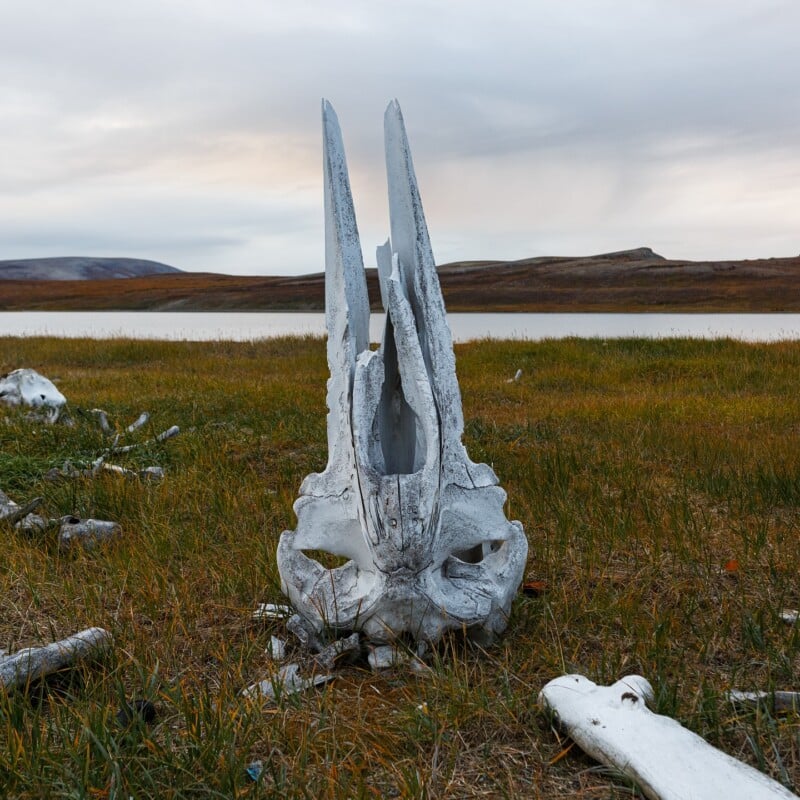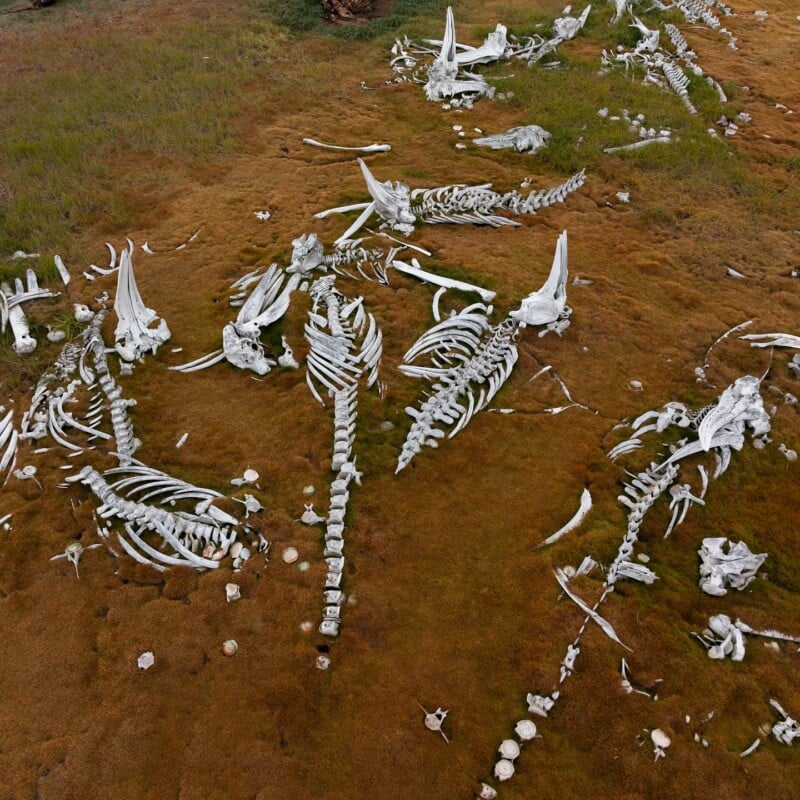Photograper Explores Whale Cemetery and Crashed Soviet DC-3 Between Worlds

A photographer on a journey of a lifetime in a remote region of the world visited a whale cemetery as well as a crashed Soviet DC-3 on Ratmanov Island, also known as Big Diomede which sits on the International Date Line (IDL).
Big Diomede, which is part of Russia, sits just over two miles from Little Diomede, which is part of the United States. Despite their proximity, Big Diomede is almost an entire day ahead of Little Diomede because of the IDL; they are sometimes referred to as Tomorrow Island (Big Diomede) and Yesterday Island (Little Diomede).
Photographer Vadim Makhorov went to Big Diomede to photograph an abandoned Li-2 plane, which crash-landed there in 1971 while delivering ballots to border guards stationed on the island. The pilots apparently got caught out by a thick band of fog and hit the top of the island.





Fortunately, all four people onboard the plane survived the crash, but did sustain broken bones and sprains. “Since then, the plane has been lying on the island, filled with inscriptions from local border guards and rare tourists,” Makhorov writes on Instagram.
Whale Cemetery
Not far east from Big Diomede is Yanrakynnot, a rural locality in Chukotka where one of the largest whale cemeteries in the far east of Russia is located.
“This place made a strong impression on me,” Makhorov says. “I was especially amazed by the vertical whale skulls. Chukchi do so the old-fashioned way, so that the spirit of the whale ‘sees’ the sea and ‘returns’ home.”


The Chukchi people are still allowed to hunt whales and walruses for subsistence. The harsh weather conditions of Siberia mean that food might not be delivered for months at a time.
“Mainly young reproductive gray whales are harvested — they are tastier,” Makhorov explains. “However, sometimes they haul in a whale and start cutting it up, only to find that it smells like ‘medicine.’ Then they abandon it and go look for another one.”


Makhorov says that the odor in these “smelly” whales is caused by a substance called “2,6-dibromophenol”, which is secreted by marine bristle worms — polychaetes.
“Although gray whales mainly feed on amphipods, they often swallow polychaetes too,” the photographer says. “In animals whose diet contains a lot of these worms, the substance accumulates in the tissues, creating that sharp, unpleasant ‘medicinal’ smell.”
Makhorov is having some trip: he recently appeared on PetaPixel after flying his drone to an abandoned Soviet polar research station station and discovered a group of polar bears living inside.
More of Makhorov’s work can be found on his Instagram page.